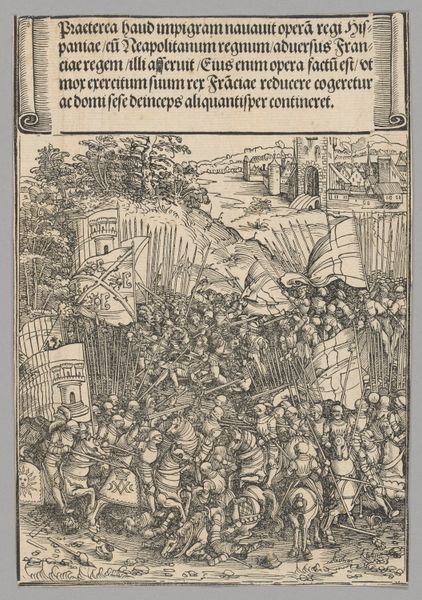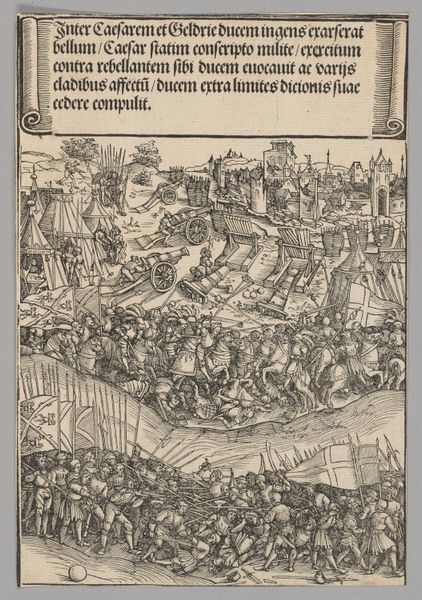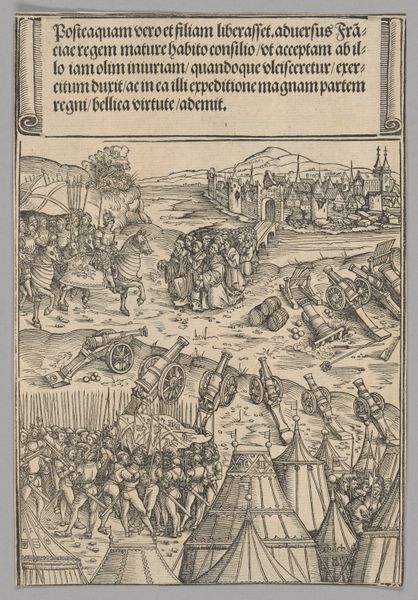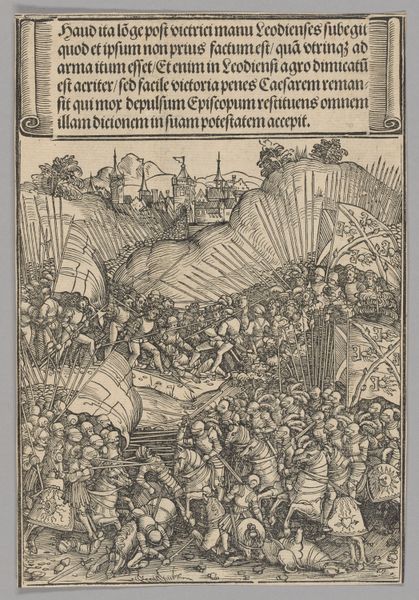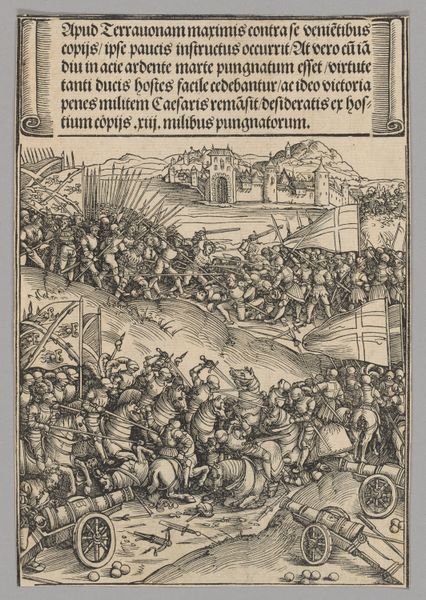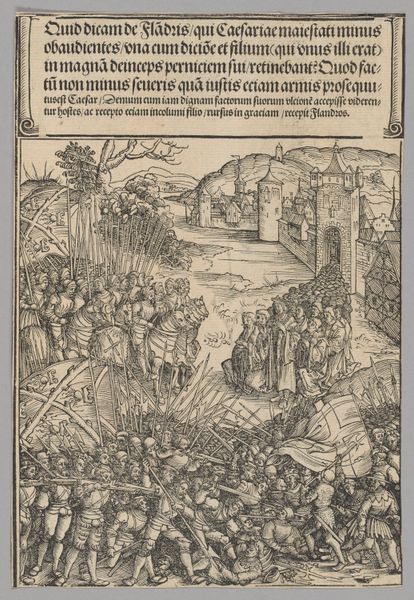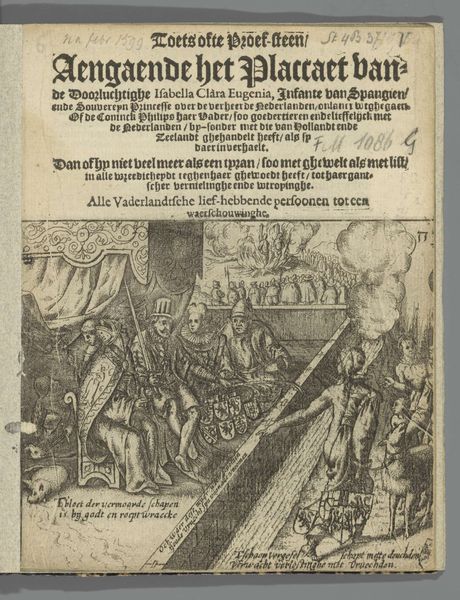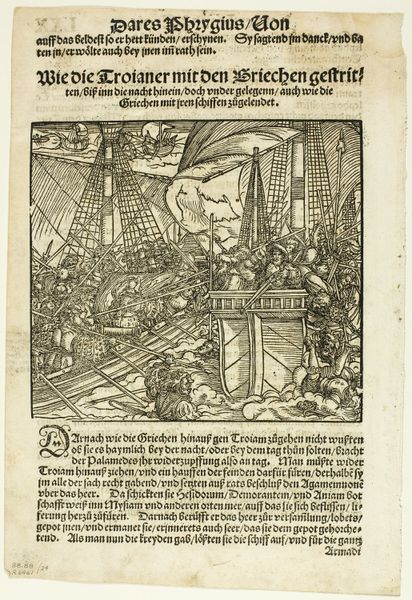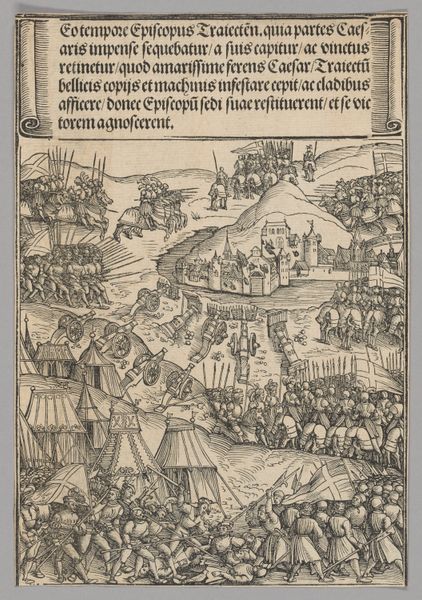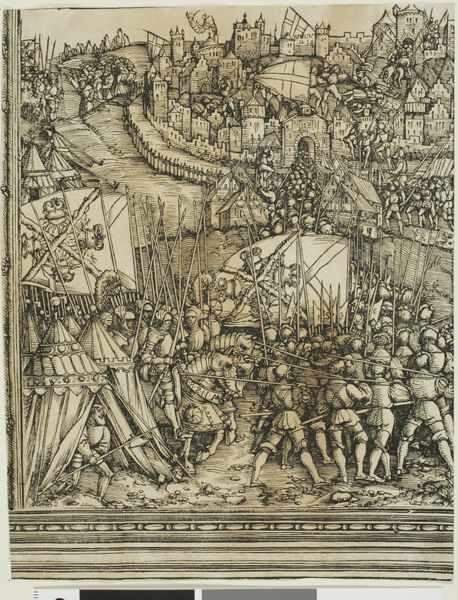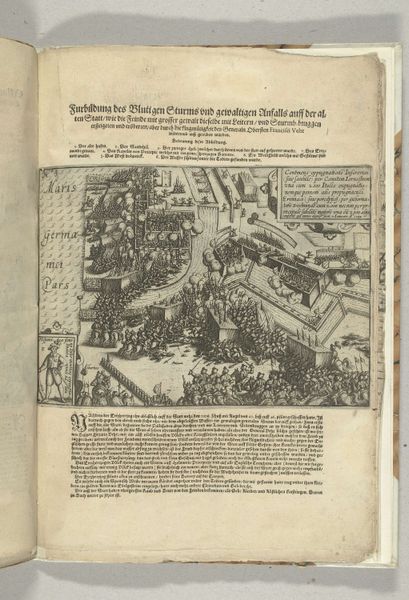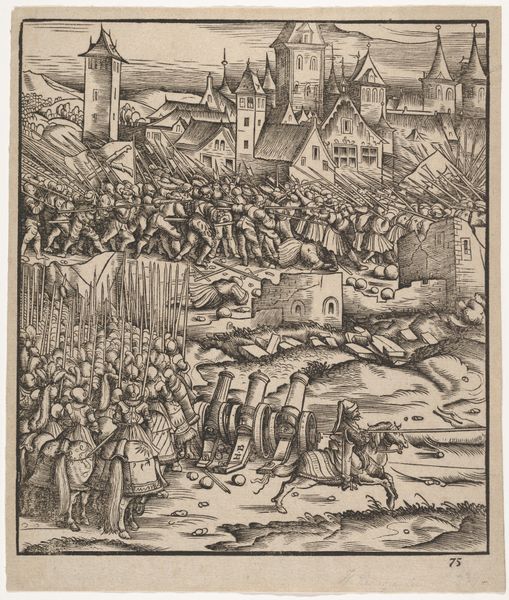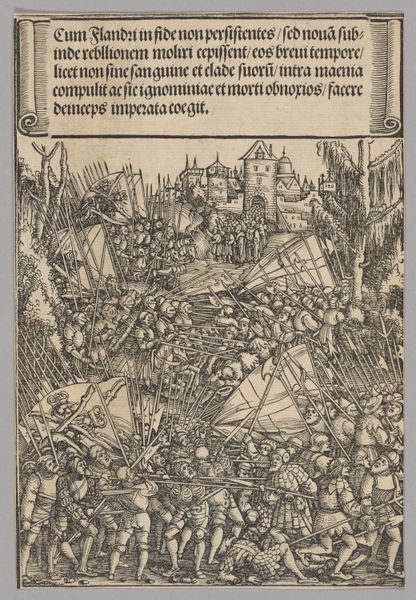
Expulsion of the Hungarians, plate 13 from Historical Scenes from the Life of Emperor Maximilian I from the Triumphal Arch c. 1515 - 1520
0:00
0:00
drawing, print, paper, ink, woodcut
#
drawing
#
narrative-art
# print
#
figuration
#
paper
#
11_renaissance
#
ink
#
geometric
#
woodcut
#
cityscape
#
history-painting
Dimensions: 223 × 153 mm
Copyright: Public Domain
Curator: This woodcut, presently held at the Art Institute of Chicago, is titled "Expulsion of the Hungarians, plate 13 from Historical Scenes from the Life of Emperor Maximilian I from the Triumphal Arch," created by Hans Springinklee around 1515 to 1520. The print on paper, executed in ink, presents a rather intense scene, doesn't it? Editor: Intense indeed. My first impression is one of overwhelming chaos. The sheer number of figures crammed into the composition creates a sense of frantic energy. It's almost dizzying. Curator: Note how Springinklee utilizes sharp, contrasting lines to delineate each figure and architectural element. The dense hatching technique amplifies the visual busyness, drawing attention to the dynamic movement of soldiers. This approach enhances the drama inherent in the subject matter itself. Editor: While you focus on the purely formal, I’m more concerned with the politics. The print commemorates Maximilian I’s military campaigns, but viewed through a modern lens, this "expulsion" raises questions about historical narratives and the construction of national identity through violent acts. Curator: Yet the complex geometric patterns within the shields and architectural details lend structure and depth. Consider, too, the textual component at the top of the piece, essentially serving as a label—an integral part of the overall design, acting as both explanation and artistic device. Editor: But who benefits from this glorification of military action? What untold stories exist of those expelled, their lives and cultures disrupted? A critical reading forces us to confront the darker side of imperial power. The triumphal arch, literally and figuratively, masks deeper systemic violence. Curator: You make valid points, of course, but analyzing the stylistic features, like the composition and contrasting line work, is how we understand the intended impact on contemporary viewers—a display of imperial strength achieved through meticulously planned artistic choices. Editor: Still, let us remember that art doesn’t exist in a vacuum. Springinklee’s composition can function to show us how power manipulates image production to perpetuate inequality, which is as relevant today as it was then. Curator: A sober, albeit important point of view, yes. I find the formal complexities a fascinating look into the period, a clear demonstration of skill. Editor: Agreed. The formal components make the piece successful in achieving its propaganda purposes, effectively contributing to myth building and social manipulation.
Comments
No comments
Be the first to comment and join the conversation on the ultimate creative platform.
